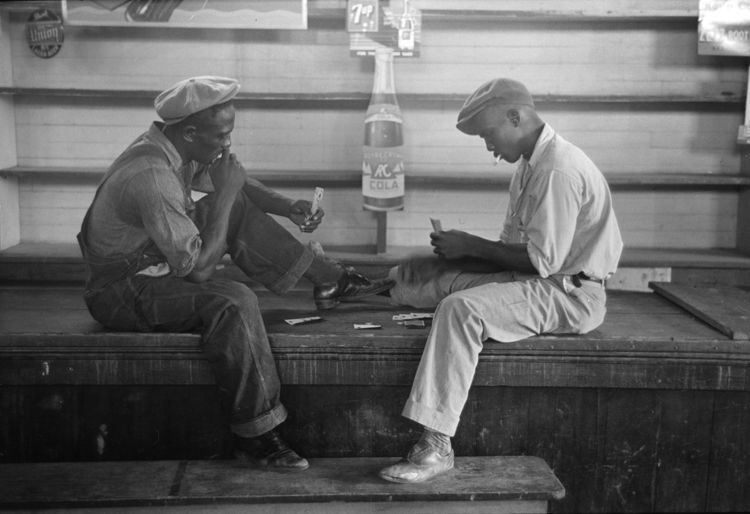Origin Mexico Type Matching Skills required Strategy | Alternative names Coon can Players 2-6 Cards 40 | |
 | ||
Conquian is a rummy style card game. David Parlett describes it as an ancestor to all modern rummy games, and a kind of proto-Gin Rummy.
Contents
The games origins are disputed. Some believe the game originated in Spain hundreds of years ago, and was then brought to Mexico. Others believe the game originated in Mexico in the mid-1800s. It was first described as Coon Can in 1887 and then in detail in R. F. Foster's Hoyle in 1897. Parlett notes that the 1920s American card-game writer Robert F. Foster “traces Conquian back to the early 1860s.”
The name is thought to either derive from "con quién" – Spanish "with whom", or from the Chinese game Kon Khin, a variation of the earlier game Khanhoo. It is sometimes corrupted to Coon Can, Councan, Conca and Cuncá, a South American variation of the game. In 19th-century Mexican literature the word is spelled cunquián, showing thus it has nothing to do with the phrase "¿Con quién?". It is much more tempting to relate Conquian to the 19th-century Philippine card game Kungkian, or Kungkiyang, which Ilocano and Cebuano dictionaries define as "A card game, the same as pañggiñggí [i.e. Panguingue], except that there are only two players."
The deal
Conquian is played by two or more players with a Spanish playing cards or a 40-card pack of cards ranking A 2 3 4 5 6 7 J Q K, being the rest stacked face-down on the table. The aim is to be the first to get rid of the cards, including the last one drawn. The total amount of cards shown must add up to nine.
Each player is dealt nine cards and wins the game by melding a total of ten cards. They may be melded by pairing at least three of a kind or by a straight flush sequence (three to ten cards from the sequence A 2 3 4 5 6 7 J Q K A: thus, A 2 3 and 6 7 J are valid sequences).
The play
After the deal, the dealer turns up the top card from the remainder of the deck to begin the discard pile. The non-dealer then has the option to take the first card, but must use it immediately (with at least two hand-cards) to make a meld. If the non-dealer doesn't want the card, the dealer has the option to pick it up and use it for his meld. If neither player wants the first card, the non-dealer takes the first card from the draw pile and may use it immediately to meld or discard it. They may not place the card in their hand. If either player makes a valid meld with it, they must discard one card from his hand. The other player may then choose this card or draw another from the pile.
So whoever turns from the pile has first choice of the card turned, and must either meld it, extend one of his existing melds with it, or pass. If both players pass, the second turns it down and draws next.
Melding
In melding, a player may "borrow" cards from their other melds to help create new ones, provided that those thereby depleted are not reduced to less than valid three-card melds. After melding, the player's discard becomes available to the opponent, who may then either meld it or turn it down and make the next draw.
Refusal
If a player declines a faced card which can legally be added to one of their existing melds, they must meld it if their opponent so demands. This way, it is sometimes possible to force a player into a situation from which they can never go out, therefore creating a point of much interest to the strategy of the play. If neither is out when the last available card has been declined, the game is drawn and the stake carried forward.
Winning
Winning a hand entails melding ten cards, so on the last play, the winning player must use the drawn card in his meld. Play may be extended over several hands by playing to a specified point total. Points still in the losing player's hand are awarded to the winner. Face value for cards 2–7, 10 points for Jacks, Queens, or Kings, and 15 points for Aces.
